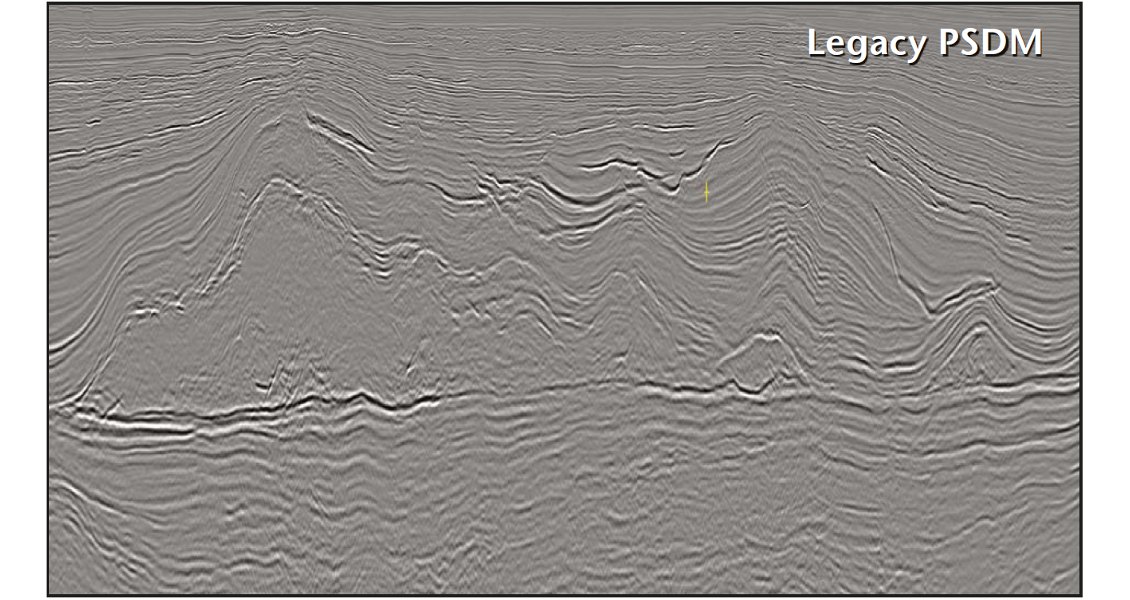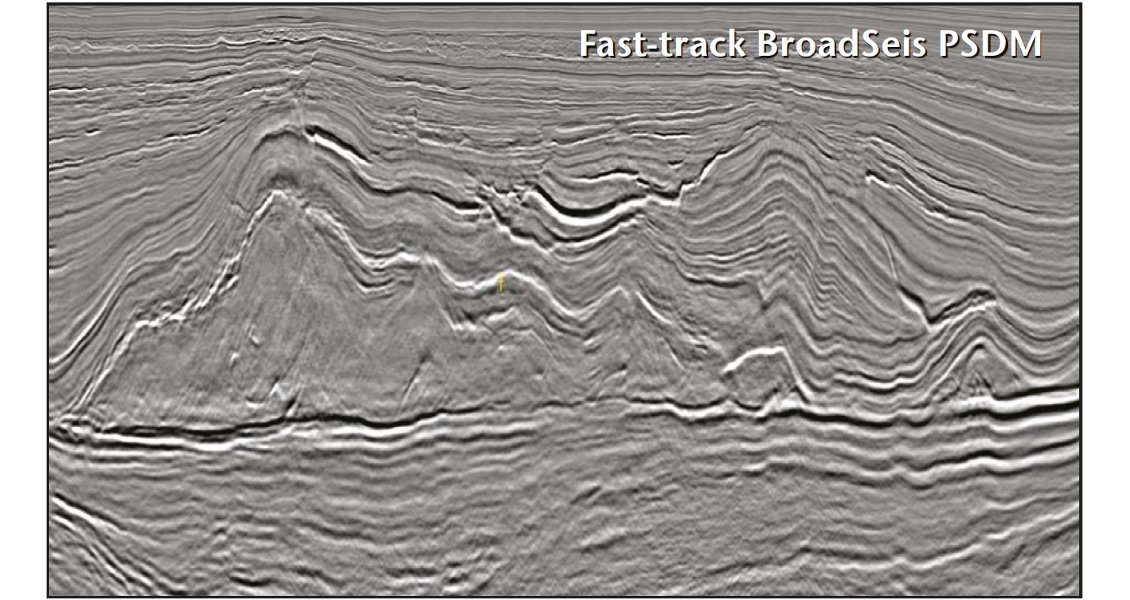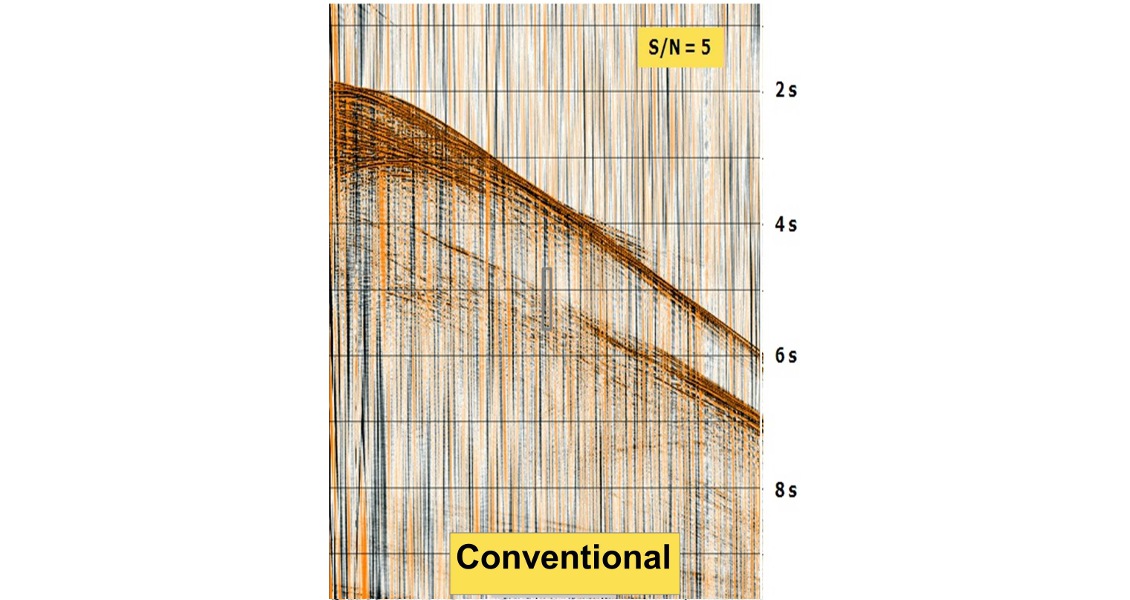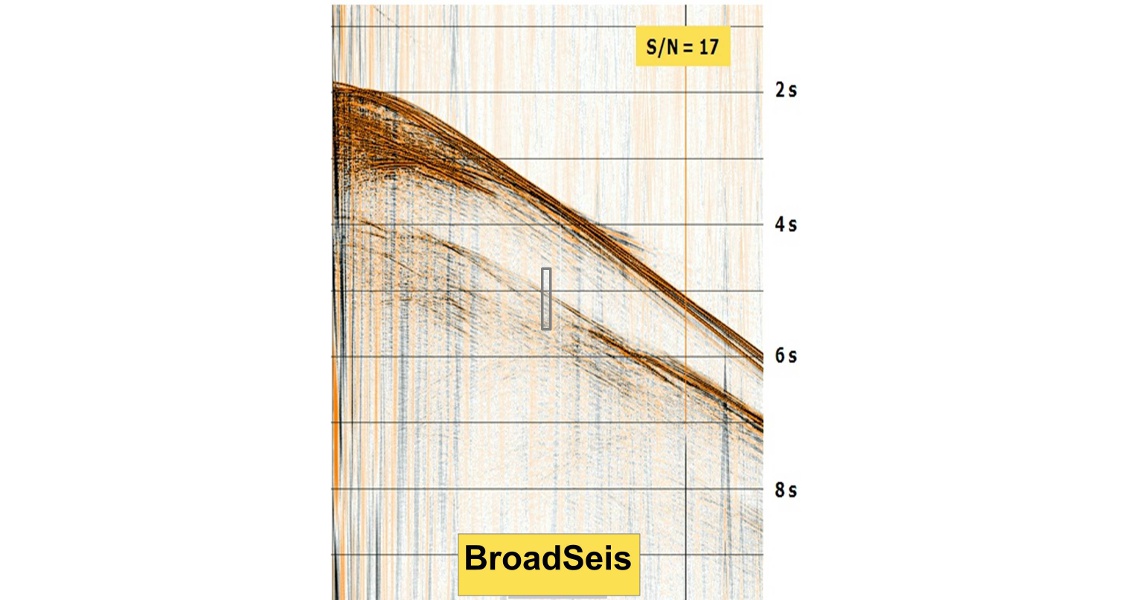“Gonna change my way of thinking. Make myself a different set of rules. Gonna put my good foot forward. And stop being influenced by fools.” Bob Dylan (1941–)
Our brain is substantially shaped by what we have learnt and by the experience of daily life. As geophysicists, we learnt and believed that seismic deghosting through ghost notches in pressure-only recordings in towed streamers was impossible when the sensors were deep. CGG changed that way of thinking. Instead of fighting the ghost in acquisition, they made a different set of rules, deliberately taking advantage of the fact that the ghost notch varies along the cable. This ‘notch diversity’ can be fully exploited in data processing and imaging.
Over the years, considerable efforts have been put into improving the bandwidth of marine seismic data. In 2010, CGG responded to broadband technology development by launching a simple, elegant and step-change solution: BroadSeisTM. Using proven, readily available equipment that could be put into operation immediately, BroadSeis is a combination of three distinct parts: deep-towed low-noise Sercel Sentinel® solid streamers; unique variable-depth streamer acquisition techniques; and deghosting and high-end imaging.
Acquiring variable-depth streamer data is not more complex than acquiring conventional streamer data because the main change is to tow the streamer at pre-defined variable depths. BroadSeis takes advantage of towing solid streamers at depths that are currently considered extreme to benefit from the improved low-frequency response of the hydrophones and reduced sea-state noise. Control of solid streamers to variable depths has proved to be robust and stable, even down to 50m. In previous issues of GEO ExPro we have addressed the benefits of broadband seismic. Both low and high frequencies are required for high-resolution imaging of important features such as thin beds, small sedimentary traps and shallow drilling hazards. In addition, high-fidelity, low-frequency data provides deeper penetration for the clear imaging of deep targets, as well as providing greater stability in seismic inversion.
Flat or Slanted Streamer Acquisition?
In conventional seismic acquisition, a vessel tows a number of streamers that are normally positioned horizontally at an approximately constant depth relative to the sea surface. It is then necessary to tow the streamer quite close to the sea surface so that the second ghost notch occurs beyond the frequency range required for imaging; the first notch occurs at 0 Hz. Thus, in the past, the ghost notches dictated the depths at which streamers were towed. However, shallow streamer depths result in attenuation of the lower frequencies due to the ghost effect.
Furthermore, towing the streamers close to the sea surface increases the noise recorded at the low-frequency end. As the streamers are moved deeper, a better low-frequency response is obtained, with a lower sea-state noise level, but the ghost notches in the amplitude spectrum come in at lower frequencies as the cable gets deeper: 100 Hz at 7.5m streamer depth and 50 Hz at 15m. In the past, this has led to a choice between recording at shallow depth to obtain the high frequencies, or deep for noise-free lower frequencies. For low frequencies, and especially for deep penetration in challenging geological environments, such as basalt or very deep layers, it is beneficial to tow the streamer at depth. However, unless the notches are removed, the higher frequencies will suffer, which is undesirable. In cases where only low frequencies are of interest, for example up to 25 Hz, and it is acceptable to sacrifice the high frequencies (e.g., all the frequencies above 25 Hz), a tow depth of 25m could be used.
This problem of towing deeper but with fewer frequencies in the recorded signal has led to compromises in the bandwidth recorded for most surveys. Different acquisition techniques have been proposed to overcome this problem, including deep-towed dual sensor streamers (GEO ExPro, Vol. 4, No. 4), with the up-going waves recorded by the geophone being used to fill in the notch in the hydrophone data, or towing pairs of streamers at different depths to yield a fuller frequency range by combining the streamer measurements into deghosting (GEO ExPro, Vol. 3, No. 1).
One early proposition was that the streamers could form a constant angle (i.e., they may be slanted) with respect to the sea surface. However, the slanted streamer has a major limitation, which may make it impractical. Current streamers have a typical length of about 6 to 10 km. Using a slanted streamer, with, for example, a slope of 2% (i.e., 0.02) relative to the sea surface, would lead to a depth of about 280m for the last sensor, but in reality current marine sensors are designed to operate in water depths up to about 50m. Thus, for current streamers, the slant streamer approach could require detectors to be located in water depths beyond their current capabilities, although as sensor technology improves, these ranges may of course increase. Furthermore, the water depth is often a limitation and for water depths less than 100–200m, a slanted streamer approach might be impossible.
Clever, Simple Solution
Spurred by the initial industry developments within what is now broadband seismic technology, Robert Soubaras of CGG came up with a clever and simple solution to the deghosting problem called BroadSeis. It is capable of acquiring both low and high frequencies with the same set of streamers by utilising a variable- depth towing configuration, i.e. the cables have an optimally curved geometry to maximise the receiver ghost-notch diversity. With this novel configuration, the receiver ghost notch varies along the cable and this ‘notch diversity’ is exploited by deghosting and imaging techniques for generating a high-quality final image with sharp and clean wavelets for easier interpretation. BroadSeis delivers an elegant solution with an improved bandwidth and, thus, a sharper image of the subsurface.
The notch diversity is designed and optimised for exploration and production targets, to deliver the best possible resolution to interpreters. The profile of the cable depth can be tuned for different water depths, target depths and desired output spectra of the wavelet. We refer the reader to the box above (Variable-Depth Streamer) to see an example of a variable-depth streamer.
Deghosting
BroadSeis, therefore, is a data acquisition technique that widens the seismic band-width at both ends of the frequency spectrum by using a single spread of Sentinel cables towed with a variable-depth configuration. Starting from the nearest channel, the receiver depth increases with offset, introducing diversity in the receiver ghosts.
This diversity enables CGG to remove the receiver ghost. One advanced method developed by Soubaras (2010) is normal plus mirror imaging followed by joint deconvolution that produces a broadband wavelet with high signal-to-noise ratio.
The issue of receiver ghosts is long- standing in the seismic industry. We are starting to see a range of solutions which are helping to overcome this challenge, and a number of alternative pre-imaging deghosting algorithms have been developed. Such solutions are offered by Wang (2013) and Poole (2013) who describe pre-migration processing approaches. Of particular interest in these methods is the derivation of a surface datum ghost-free model of the data. This model may be used to receiver-side deghost and re-datum data so that conventional flat streamer algorithms can be used.









